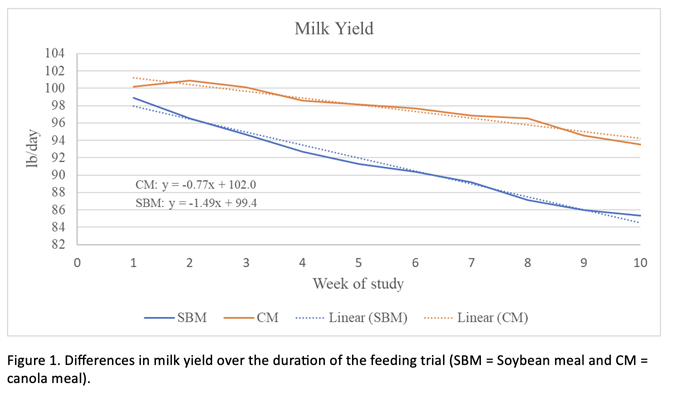

January 2023
Originally published in Dairy Business, written by: JORDAN KUEHNL, KEN KALSCHEUR AND BRITTANY WOOD
Persistency is generally considered in terms of dairy cow genetics. Cows that decline in milk more slowly after peaking can produce more milk in their lactation than ones that experience a rapid decline in milk after peaking. In addition, cows that produce more milk post-peak while in positive energy balance are less likely to be over-conditioned at drying off. Consequently, cows that maintain a high level of production after peaking will be more profitable over the course of the lactation.
Our results from a recent feeding study at the US Dairy Forage Research Center, Madison, WI clearly demonstrated that there may also be a nutritional component to persistency. This finding was a surprise for us, with the insightful results suggesting that nutrition researchers might wish to look at designing feeding studies to further examine persistency.
The original purpose of the study was to compare production responses of cows fed two protein sources, soybean meal and canola meal. In addition, cows were separated into two feed efficiency groups, either with high or low residual feed intake. Both diets contained 16.5% crude protein (dry matter basis). The study ran for 10 weeks beginning at about 85 days in milk. As Table 1 shows, the diets were similar in ingredient composition. Canola meal replaced the soybean meal and soybean hulls, while all the remaining ingredients stayed the same.
| Ingredient, % of DM | Soybean meal | Canola meal |
| BMR corn silage | 45 | 45 |
| Alfalfa silage | 15 | 15 |
| HM corn | 19 | 19 |
| Soybean meal | 11.7 | 0 |
| Soybean hulls | 3.8 | 0 |
| Canola meal | 0 | 15.5 |
| Corn gluten meal | 2 | 2 |
| Fat | 1 | 1 |
| Minerals and vitamins | 2.5 | 2.5 |
To satisfy the curious, residual feed intake status affected feed intake and ECM/intake feed efficiency. However, production responses due to protein source were not influenced by residual feed intake status, with both residual feed intake groups responding to the protein sources in the same way. There were differences in milk production resulting from the two protein sources. The cows receiving the canola meal diet produced over six pounds more milk per day than the cows given the diet formulated with soybean meal over the course of the 10 weeks.
| Production Measure | Soybean meal | Canola meal |
| Intake, lb/day | 56.0 | 59.5 |
| Milk yield, lb/day | 91.3 | 97.7 |
| ECM yield, lb/day | 100.5 | 105.4 |
| ECM/Intake | 1.81 | 1.78 |
Many research studies have shown that substituting canola meal for soybean meal typically results in about two pounds more milk per day. Generally, the feeding periods for these studies were three to four weeks, and therefore may not have captured the potential long-term effect of feeding canola meal on milk production.

We graphed milk yields over the 10 week trial (Figure 1). As the figure clearly shows, the difference in milk yield widened over time, with cows on the canola meal diet displaying greater persistency than
cows that were given the soybean meal diet. Had the cut off for this study been only four weeks, then the differences between the two meals would have clearly been less than the six pounds per day determined for the duration of the trial. In a shorter experiment, we would not have been aware of the differences in persistency.
These results revealed that nutrients may play a key role in improving persistency and total lactation milk yield per cow. The increased milk yield for cows fed diets with canola meal compared to soybean meal has long been thought to be due in large part to the greater methionine content of canola meal. Methionine is an essential amino acid generally considered to be first limiting for milk protein production. While methionine serves a crucial role in milk production from a nutrition standpoint, it may also be influencing genetics in the present study, based on results from previous studies examining differences of methionine supply in dairy cow diets.
Importantly, cows might be profitable for an extended period in their lactation cycle depending on their diet, genetic makeup, and the relationship between these two factors. Although conducting long-term feeding studies can be expensive, it might be useful to compare differences between responses to ingredients over a longer period to learn more about the effects on milk persistency.